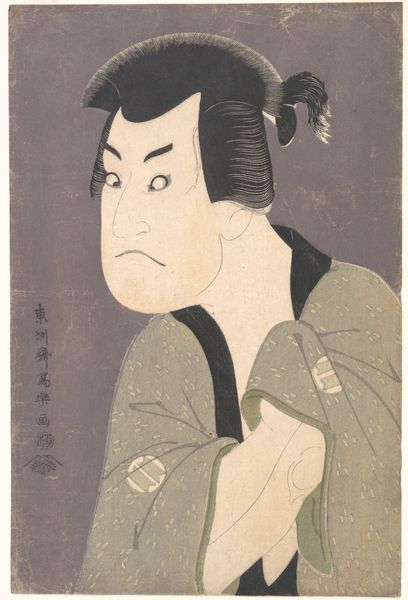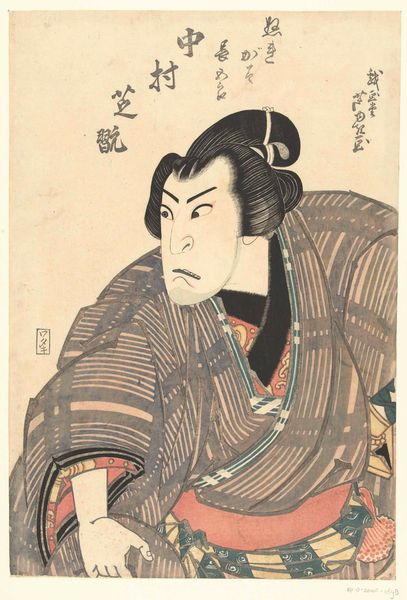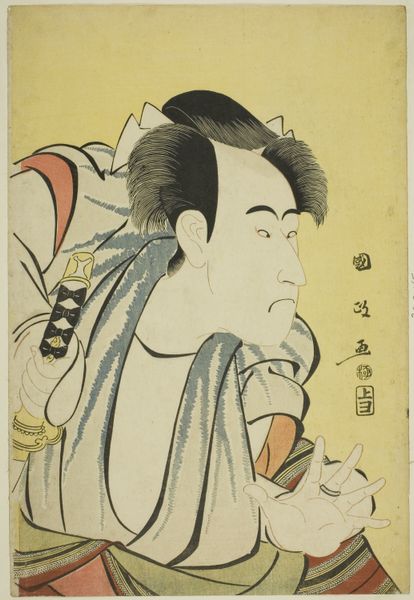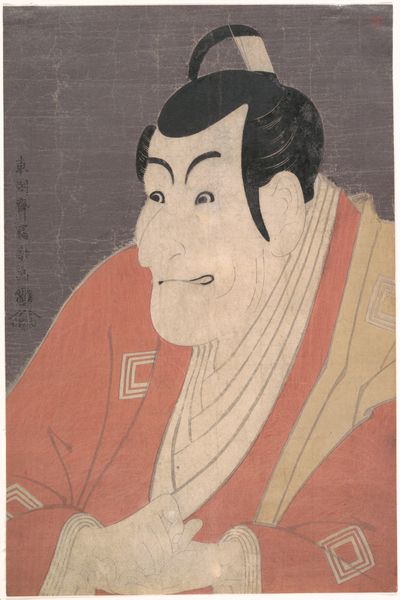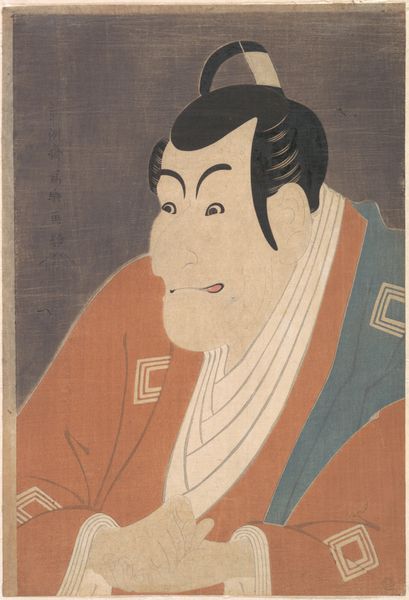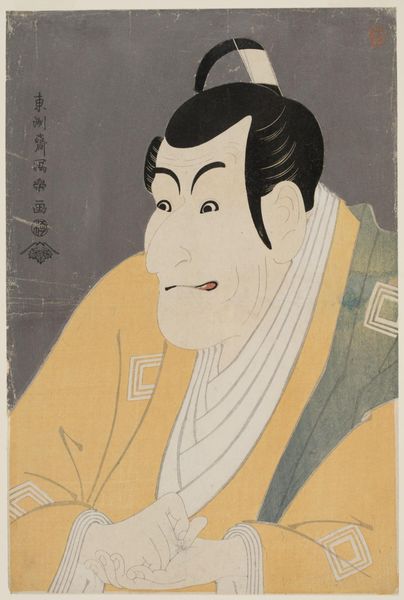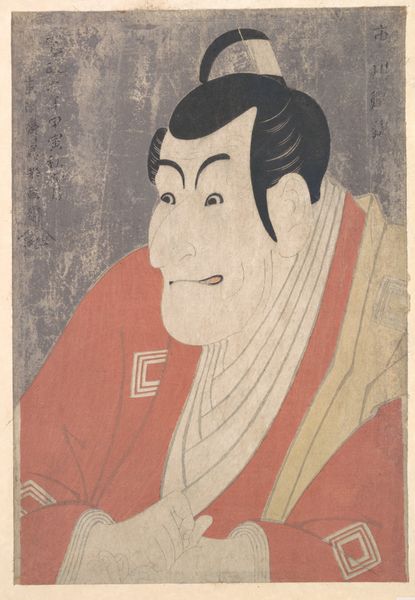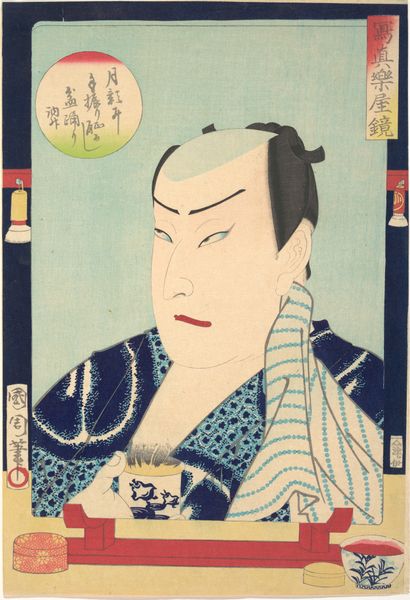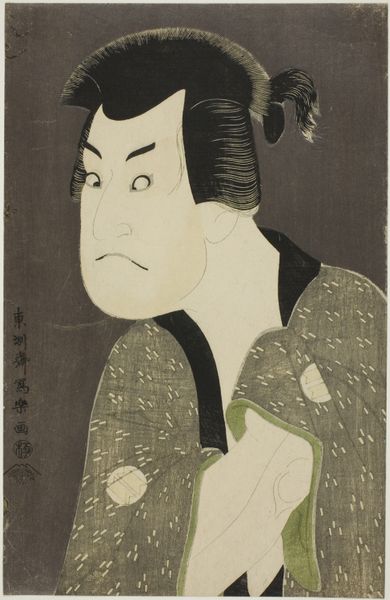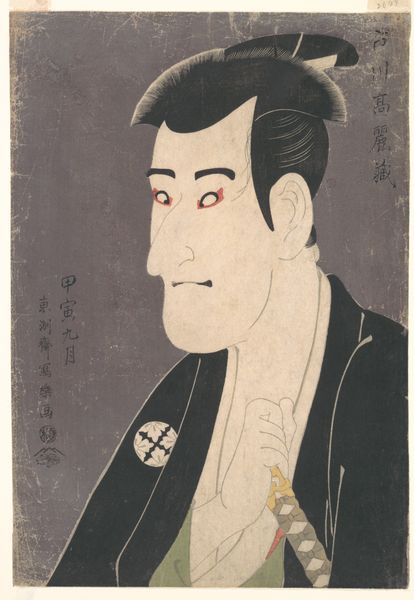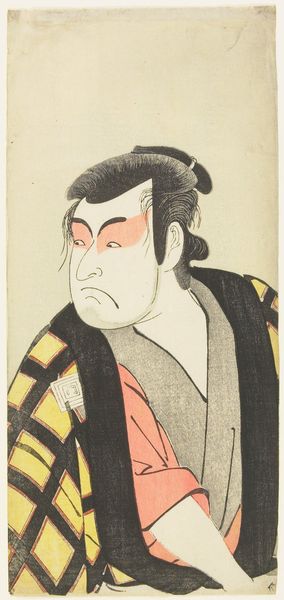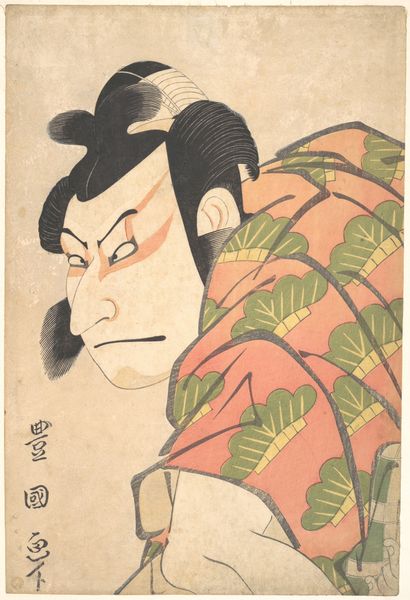
print, woodblock-print
#
portrait
# print
#
caricature
#
asian-art
#
caricature
#
ukiyo-e
#
woodblock-print
Dimensions: 37.9 × 25.0 cm
Copyright: Public Domain
Curator: Allow me to introduce you to Tōshūsai Sharaku's woodblock print from 1794, "The actor Otani Oniji III as Edobei," currently housed at The Art Institute of Chicago. Editor: My goodness, what an intense gaze! There's a certain theatricality, almost a caricature, to his expression. The stark contrast of his skin against the dark background amplifies that. Curator: Indeed. Sharaku was a master of capturing the essence of Kabuki actors. Consider the stark lines, the flat planes of color typical of ukiyo-e prints. There’s an economy of means here, wouldn’t you agree, that is still quite arresting? Editor: Arresting and, I would argue, loaded. Edobei was a villainous role, wasn't he? Looking at this, I see a representation of power—masculine power specifically. His wide stance, the way he's thrusting his hands forward – there's an aggression that speaks volumes about the representation of masculinity on the Kabuki stage and its reflection of the Edo period's power dynamics. Curator: Yes, the artist masterfully uses line and color to convey the character’s intensity. Notice the almost geometric precision in the actor's raised eyebrows and pursed lips. And the repetition of lines in the striped kimono is wonderfully patterned, adding a formal rigor. Editor: And what about the red outlining his eyes? That color choice can’t be arbitrary. It enhances that sense of heightened emotion, almost bordering on mania. We also need to consider the printmaking process. Who had access to these images? Who was the intended audience and what does this suggest about Sharaku's potential commentary on the theater’s elite clientele? Curator: An excellent point. What strikes me most, from a purely compositional view, is the balance he strikes between the detailed rendering of the face and hands versus the simplified background. It really does focus the viewer’s attention. Editor: Focusing our attention is precisely what powerful figures aim to do. This image isn't just a portrait of an actor. It's a snapshot of performative power and societal structure from over two centuries ago. Examining its construction allows a conversation about the legacies of power that linger today. Curator: Precisely. It's through these close analyses of form, line, and context that we see what gives the work continuing force. Editor: Yes, by exploring both the intrinsic qualities of the work alongside its social implications. I am certain there is far more here that could be illuminated through sustained critical study.
Comments
No comments
Be the first to comment and join the conversation on the ultimate creative platform.
